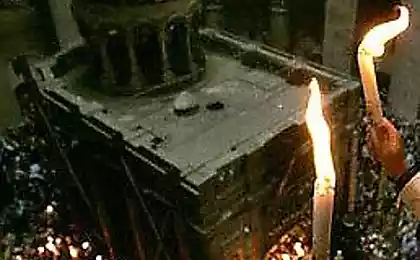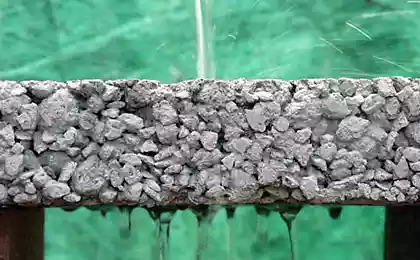535
6 amazing ancient inventions, the secret of which was lost for thousands of years
The universe is full of mysteries that defy science. In this article, we will discuss the various phenomena that often go beyond the understanding of modern science.

Unfortunately, the secrets of many useful inventions made thousands of years ago and finding wide application in the early periods of development of mankind, now lost and still confused by engineers and inventors of the technology development. Modern analogues of some of these inventions have appeared recently.
1. Greek fire: a mysterious chemical оружие
The image of an illuminated (decorated with colored miniatures and ornaments) of the Madrid manuscript of John Skylitzes, which depicts the Greek fire used against the fleet of Thomas the Slav (the leader of one of the largest popular anti-feudal uprisings in the Byzantine Empire). The inscription above the left ship reads: "the Romans set fire to the enemy fleet"
VII-xiivekah Byzantines used a mysterious substance in the naval battles to ignite their enemies. This fluid is always focused on the enemy through tubes or siphons, burned even in water. The fire could be extinguished only by vinegar or sand in the urine. It is a chemical weapon known as Greek fire. We still don't know what was the matter. The Byzantines kept the recipe a closely guarded secret, it was known only to a few devoted, and eventually it was lost.
2. Flexible glass is too expensive Veselov three extant ancient sources contain references to the flexible glass. However, they are not sufficiently detailed to unequivocally say that such a substance really existed. The history of its invention was first told by Petronius (d. in 63 ad).
He wrote about a glassmaker who presented the Emperor Tiberius (who ruled from 14-37 ad) glass jar. Glassblower Emperor asked him to return the vessel and when he got it, threw it on the floor. The vessel is not broken, but only deformed and glassblower quickly regained his original form. For fear of reducing the value of precious metals, Tiberius ordered to behead the inventor to his secret died with him.
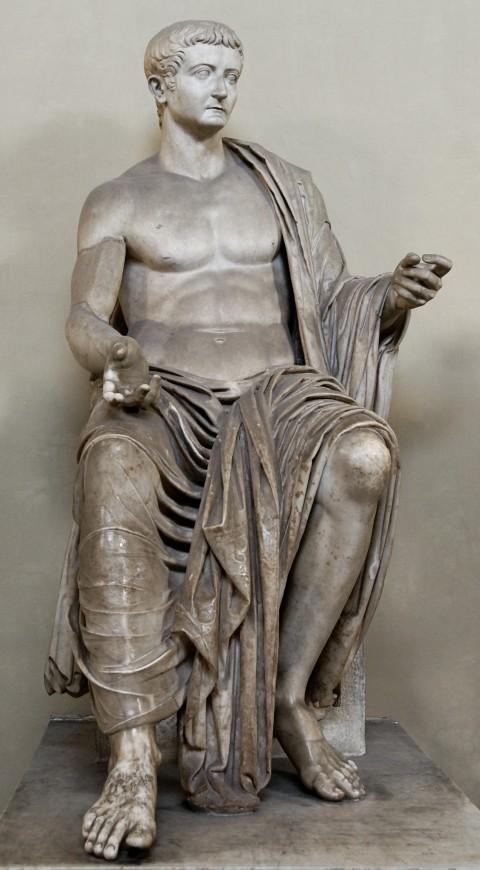
Marble statue of Emperor Tiberius, 37 ad
One version of this story contained in the writings of Pliny the Elder (d. in 79 ad) and the other was told a couple of hundred years later, by Dion Cassius: the main character in it is not a glass blower, and MAG. When the vessel was thrown on the floor, it crashed, and the wizard returned it to its original state with his bare hands.
In 2012, Corning glass company introduced a flexible "willow glass" – heat resistant and flexible material so that it can be twisted into coils. This invention has found wide application for the production of solar panels.
If unhappy Roman glassblower really invented flexible glass, he is thousands of years ahead of his time.
3. The antidote to all adoratrice so-called "universal antidote" was attributed to king Mithridates VI of Pontus (who ruled 120-63 BC). And his improvement to the personal physician of the Emperor Nero. The original formula of the poison was lost, but preserved information about the ingredients. Among them were opium, chopped vipers, and a combination of low doses of poisons and their antidotes. This tells Adrian Meyor, folklorist and historian of science from Stanford University in its work in 2008 under the title "Greek fire, poison arrows and bombs scorpionov: chemical and biological weapons in the ancient world."
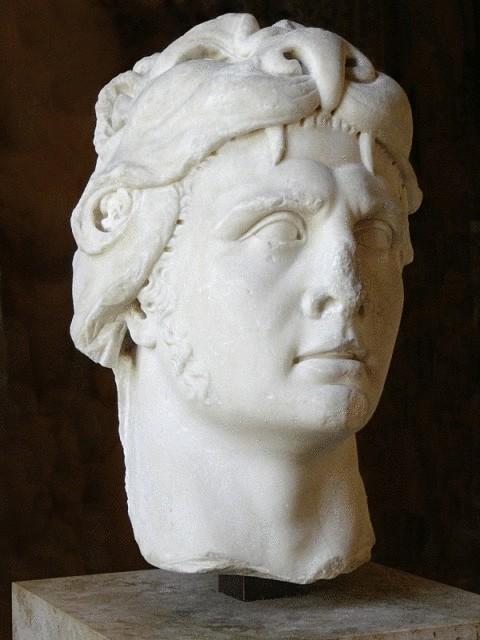
King Mithridates VI of Pontus
This substance was known as mitridatium, in honor of king Mithridates VI.
Meyor also says Sergei Popov, a former Soviet leading developer of biological weapons, fled to the United States in 1992, tried to make a modern mitridatium.
4. Heat ray gun
Archimedes sets fire to the Roman court near Syracuse with parabolic mirrors
The Greek mathematician Archimedes (d. in 212 BC) developed beam weapons, which tried to recreate in 2004, the authors of the program "Mythbusters" of Discovery channel. Adrian meyor described the weapon as "a series of polished bronze shields reflecting the sun's rays on enemy ships."
"Mythbusters" failed to reproduce this ancient weapon and they acknowledged it is a myth, but students at mit in 2005, was able to burn a boat in the Harbor of San Francisco with this weapon, invented 2200 years ago.
Meyor also described the microwave heat ray gun, acting on "the victim's skin, heating it to 55 °C and creating a sense that she's on fire", which was presented in 2001 by the Agency for defense advanced research DARPA.
5. Roman бетон
Concrete for almost 2,000 years in Rome
Numerous Roman buildings, stood for thousands of years, are a direct proof of the higher quality of Roman concrete in comparison with the modern buildings of which begin to decay and decay after only 50 years after construction.
The secret of longevity of this ancient concrete has been opened recently. The secret ingredient was volcanic ash.
In an article published in 2013, news center, University of California at Berkeley, reported that researchers first described the mechanism whereby an ultra-stable compound calcium-aluminum-silicate-hydrate binds the material. In the process of its production emits less carbon dioxide than the production of any modern concrete. Its disadvantages include longer drying times and less strength than modern concrete, in spite of greater durability.
6. Damascus сталь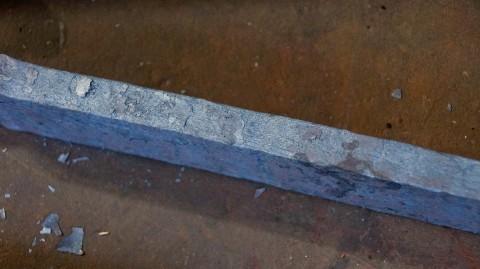
The sword of Damascus steel
In the middle ages in the middle East from Damascus steel swords were forged. The source material was wootz steel, alloy of Asian origin. Damascus steel – a very durable metal. Prior to the beginning of the industrial revolution, he remained the strongest metal known to man.
The secret of making the middle East Damascus steel was recovered only in modern laboratories using scanning electron microscopy. People have mastered this technology around 300 BC and lost it in the middle of the XVIII century.
Source: mixstuff.ru/archives/71755

Unfortunately, the secrets of many useful inventions made thousands of years ago and finding wide application in the early periods of development of mankind, now lost and still confused by engineers and inventors of the technology development. Modern analogues of some of these inventions have appeared recently.
1. Greek fire: a mysterious chemical оружие

The image of an illuminated (decorated with colored miniatures and ornaments) of the Madrid manuscript of John Skylitzes, which depicts the Greek fire used against the fleet of Thomas the Slav (the leader of one of the largest popular anti-feudal uprisings in the Byzantine Empire). The inscription above the left ship reads: "the Romans set fire to the enemy fleet"
VII-xiivekah Byzantines used a mysterious substance in the naval battles to ignite their enemies. This fluid is always focused on the enemy through tubes or siphons, burned even in water. The fire could be extinguished only by vinegar or sand in the urine. It is a chemical weapon known as Greek fire. We still don't know what was the matter. The Byzantines kept the recipe a closely guarded secret, it was known only to a few devoted, and eventually it was lost.
2. Flexible glass is too expensive Veselov three extant ancient sources contain references to the flexible glass. However, they are not sufficiently detailed to unequivocally say that such a substance really existed. The history of its invention was first told by Petronius (d. in 63 ad).
He wrote about a glassmaker who presented the Emperor Tiberius (who ruled from 14-37 ad) glass jar. Glassblower Emperor asked him to return the vessel and when he got it, threw it on the floor. The vessel is not broken, but only deformed and glassblower quickly regained his original form. For fear of reducing the value of precious metals, Tiberius ordered to behead the inventor to his secret died with him.

Marble statue of Emperor Tiberius, 37 ad
One version of this story contained in the writings of Pliny the Elder (d. in 79 ad) and the other was told a couple of hundred years later, by Dion Cassius: the main character in it is not a glass blower, and MAG. When the vessel was thrown on the floor, it crashed, and the wizard returned it to its original state with his bare hands.
In 2012, Corning glass company introduced a flexible "willow glass" – heat resistant and flexible material so that it can be twisted into coils. This invention has found wide application for the production of solar panels.
If unhappy Roman glassblower really invented flexible glass, he is thousands of years ahead of his time.
3. The antidote to all adoratrice so-called "universal antidote" was attributed to king Mithridates VI of Pontus (who ruled 120-63 BC). And his improvement to the personal physician of the Emperor Nero. The original formula of the poison was lost, but preserved information about the ingredients. Among them were opium, chopped vipers, and a combination of low doses of poisons and their antidotes. This tells Adrian Meyor, folklorist and historian of science from Stanford University in its work in 2008 under the title "Greek fire, poison arrows and bombs scorpionov: chemical and biological weapons in the ancient world."

King Mithridates VI of Pontus
This substance was known as mitridatium, in honor of king Mithridates VI.
Meyor also says Sergei Popov, a former Soviet leading developer of biological weapons, fled to the United States in 1992, tried to make a modern mitridatium.
4. Heat ray gun
Archimedes sets fire to the Roman court near Syracuse with parabolic mirrors
The Greek mathematician Archimedes (d. in 212 BC) developed beam weapons, which tried to recreate in 2004, the authors of the program "Mythbusters" of Discovery channel. Adrian meyor described the weapon as "a series of polished bronze shields reflecting the sun's rays on enemy ships."
"Mythbusters" failed to reproduce this ancient weapon and they acknowledged it is a myth, but students at mit in 2005, was able to burn a boat in the Harbor of San Francisco with this weapon, invented 2200 years ago.
Meyor also described the microwave heat ray gun, acting on "the victim's skin, heating it to 55 °C and creating a sense that she's on fire", which was presented in 2001 by the Agency for defense advanced research DARPA.
5. Roman бетон

Concrete for almost 2,000 years in Rome
Numerous Roman buildings, stood for thousands of years, are a direct proof of the higher quality of Roman concrete in comparison with the modern buildings of which begin to decay and decay after only 50 years after construction.
The secret of longevity of this ancient concrete has been opened recently. The secret ingredient was volcanic ash.
In an article published in 2013, news center, University of California at Berkeley, reported that researchers first described the mechanism whereby an ultra-stable compound calcium-aluminum-silicate-hydrate binds the material. In the process of its production emits less carbon dioxide than the production of any modern concrete. Its disadvantages include longer drying times and less strength than modern concrete, in spite of greater durability.
6. Damascus сталь

The sword of Damascus steel
In the middle ages in the middle East from Damascus steel swords were forged. The source material was wootz steel, alloy of Asian origin. Damascus steel – a very durable metal. Prior to the beginning of the industrial revolution, he remained the strongest metal known to man.
The secret of making the middle East Damascus steel was recovered only in modern laboratories using scanning electron microscopy. People have mastered this technology around 300 BC and lost it in the middle of the XVIII century.
Source: mixstuff.ru/archives/71755
Nuclear physicist radium Ilkaev: we Have everything. It is only necessary to include brains
Ten of the best cardio workouts





